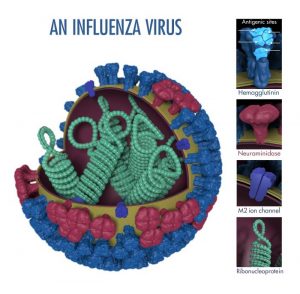New Mexico and California State health officials announced today the first influenza related fatalities of the current 2014-2015 flu season in adults.

New Mexico health officials reported 5 deaths today that include a 29 year-old man from Curry County, a 79 year-old woman from Sandoval County, an 86 year-old woman and 81 year-old woman, both from Bernalillo County, and a 92 year-old woman from Los Alamos County. Health officials are also reporting an increase in flu activity throughout the state.
“We recommend that everyone six months and older get vaccinated against the flu. It’s still not too late to get vaccinated,” said Department of Health Cabinet Secretary Retta Ward, MPH. “It’s also important for people who might have the flu, and especially those at high risk for complications, to talk to a medical provider about getting treated with an antiviral medication. Treatment with a flu antiviral can make flu symptoms milder and shorter and reduce the risk of complications that can result in hospitalization or death.”
In California, Dr. Ron Chapman, director of the California Department of Public Health (CDPH) and state health officer, announced the death of an adult resident of Southern California today. This is the first confirmed influenza death of a person under the age of 65 reported for the 2014-2015 season.
“Flu activity is beginning to increase statewide, including reports of hospitalizations and severe disease,” said Dr. Chapman. “We are early on in what could be a severe flu season, and I encourage everyone who has not yet gotten a flu vaccination to do so. The influenza vaccine remains the most effective way to protect yourself from the flu.”
Nationally, widespread influenza activity was reported by Guam and 46 states, an increase from 43 states during the previous week. Puerto Rico, the U.S. Virgin Islands, and three states (Alaska, Arizona, and California) reported regional geographic influenza activity. Local flu activity was reported by the District of Columbia and Hawaii.
Five additional pediatric influenza deaths have been reported, bringing that total to 26.
During a CDC telebriefing today, CDC director Dr Tom Frieden said, “We still have weeks of flu activity ahead of us. Key flu indicators suggest that this year is shaping up to be a bad one, particularly for people 65 and older. That’s what we expect for a season where H3N2 is the predominant strain.”
Frieden also stressed the use of antiviral drugs like Tamiflu as an adjunct to vaccination. “They’re the only medicines that can specifically treat influenza illness, and in the context of an H3N2 predominant season with a less effective vaccine, treatment with anti-flu drugs is even more important than usual, Frieden noted. CDC scientists have looked very carefully at the use of influenza drugs in the clinical setting, and the conclusion is clear, they work but they aren’t being used nearly enough. They can reduce symptoms, shorten the duration of illness, prevent serious complications; if you have influenza and get the medicines early, you may not need to be admitted to a hospital. In hospitals people are given medications early.”


2 thoughts on “California, New Mexico report first flu-related deaths of the season”